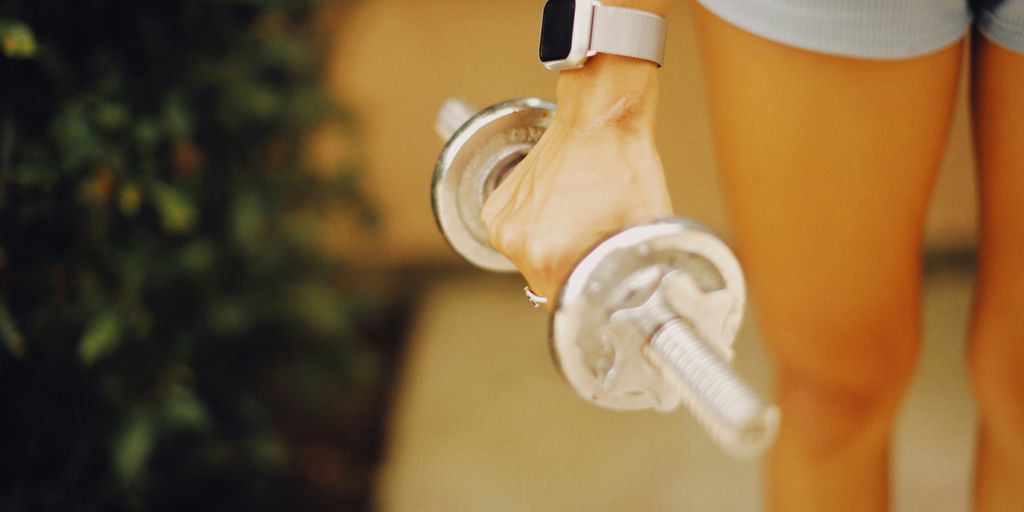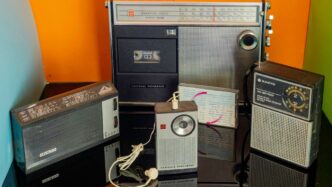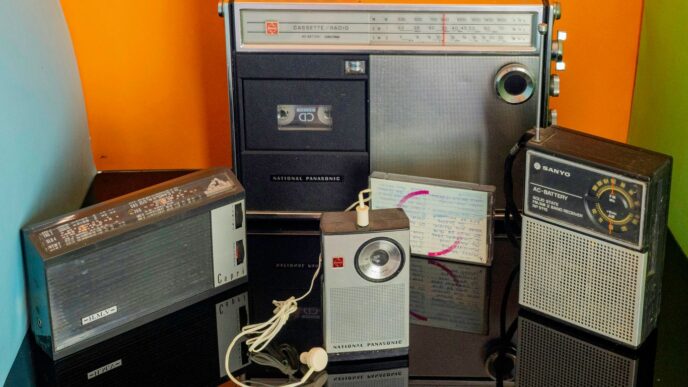Finding the best fitness tracker under $50 is a bit like panning for gold—you know there are gems out there, but most of the time you find rocks. In this guide, I’ll walk you through what really matters: step count and heart rate accuracy, how long the band runs between charges, what it feels like on your wrist, and more. By the end, you’ll know how to spot a reliable tracker without breaking the bank.
Key Takeaways
- Step counts, heart rate readings, and sleep data can vary widely—pick a tracker proven to get these basics right.
- Battery life on budget devices ranges from a couple of days to over a week—aim for at least five days and easy charging so you don’t lose data.
- A light band, soft strap material, and a snug fit are key if you plan to wear your tracker around the clock.
- Choose a model with at least IP67 water and dust resistance so it survives sweat, rain or a quick dip.
- Check that the tracker’s app works smoothly on your Android or iPhone, and that syncing doesn’t crash or lose your data.
Evaluating Core Tracking Features
When you’re trying to find a fitness tracker that doesn’t break the bank, it’s easy to get caught up in fancy features. But let’s be real, the core tracking stuff is what really matters. We’re talking about the basics that give you a solid picture of your daily activity and overall health.
Step Count Accuracy
How well does it actually count your steps? Some of these budget trackers can be way off, either overestimating or underestimating your movement. It’s not about getting the exact number, but you want something reasonably close. I remember one time, I was testing a cheap tracker, and it added like 2,000 steps while I was just sitting at my desk! Here’s a quick rundown of what to look for:
- Consistent Readings: Check if the step count is consistent across multiple days with similar activity levels.
- Comparison: Compare the step count with your smartphone’s built-in pedometer or another trusted tracker.
- Real-World Testing: Wear the tracker during different activities (walking, running, household chores) to see how it performs.
Heart Rate Monitoring
Heart rate monitoring is a big deal, especially if you’re using the tracker for workouts. You want to make sure it’s giving you accurate readings so you can stay in the right training zone. Wrist-based heart rate monitors aren’t always perfect, but they should be reliable enough for general fitness tracking. Things that can affect accuracy include how snug the band is, skin tone, and even the type of activity you’re doing.
Sleep Tracking Reliability
Sleep tracking can be super helpful for understanding your sleep patterns, but only if it’s accurate. A lot of the cheaper trackers struggle with this. They might not correctly identify when you fall asleep or wake up, and they might miss periods of restlessness during the night. Here are some things to consider:
- Sleep Stages: Does the tracker differentiate between light, deep, and REM sleep?
- Wake-Up Detection: How accurately does it detect when you wake up in the morning or during the night?
- Data Presentation: Is the sleep data presented in a clear and easy-to-understand format? You want to be able to see trends and patterns in your sleep habits. For example, you can use a sleep tracker to monitor your sleep patterns.
Assessing Battery Performance On Budget Devices

When you’re hunting for a fitness tracker under $50, battery life becomes a really big deal. You don’t want something that dies halfway through your workout or needs charging every single night. Let’s break down what to look for.
Typical Battery Life
Okay, so manufacturers love to throw around big numbers, but what’s realistic? Aim for a tracker that gives you at least 5-7 days of use on a single charge. That way, you’re not constantly tethered to a charger. Keep in mind that features like continuous heart rate monitoring and frequent smartphone notifications will drain the battery faster. Here’s a quick look at what you might expect:
| Usage Pattern | Estimated Battery Life |
|---|---|
| Basic Tracking (steps) | 7-10 days |
| Moderate Use (HR, some notifications) | 5-7 days |
| Heavy Use (GPS, constant HR) | 2-3 days |
Charging Convenience
Beyond just how long the battery lasts, think about how you charge it. Is it a proprietary cable that you’ll inevitably lose? Or does it use a standard USB connection? Shorter charging times are also a plus. Some trackers can get a full charge in under two hours, which is super convenient.
Power Saving Modes
Many budget fitness trackers include power saving modes. These modes usually turn off some features, like continuous heart rate monitoring or detailed sleep tracking, to extend battery life. If you know you’ll be away from a charger for a while, switching to power saving mode can be a lifesaver. It’s a good way to extend the battery life when you need it most. Here are some common power saving tactics:
- Turning off continuous heart rate monitoring.
- Disabling notifications.
- Reducing screen brightness.
- Limiting data syncing frequency.
Ensuring Comfort And Wearability All Day
Let’s be real, even the coolest fitness tracker is useless if it’s so uncomfortable you never wear it. We’re talking 24/7 wear here, so comfort is king (or queen!).
Strap Material Quality
The strap can make or break a fitness tracker. Cheap plastic can be stiff, irritating, and trap sweat. Look for soft, flexible materials like silicone or TPU. Some trackers even offer fabric or leather straps, but those might push you over the $50 budget. Pay attention to the clasp too; a secure and easy-to-use closure is a must.
Adjustable Fit
One size definitely does not fit all. Make sure the tracker has enough adjustment holes to fit your wrist comfortably. Too tight, and it’ll dig in and leave marks. Too loose, and it’ll slide around and mess with the accuracy of the sensors. A good fit is snug but not constricting. Here’s a quick guide:
- Small: 5.5 – 7 inches
- Medium: 6.5 – 8 inches
- Large: 7.5 – 9 inches
Weight And Profile
Nobody wants to feel like they’re lugging around a brick on their wrist. A lightweight tracker with a slim profile is ideal for all-day wear. Bulky trackers can get in the way, especially during workouts or when you’re trying to sleep. The FITVII waterproof fitness tracker is a good example of a lightweight option.
Water Resistance And Durability Standards
Let’s be real, a fitness tracker is going to take a beating. You’re wearing it while working out, sweating, maybe even swimming. So, water resistance and overall durability are super important, especially when you’re trying to stay under that $50 budget. You don’t want something that’s going to fall apart after a few weeks.
Swim Tracking Capabilities
Okay, so not all cheap fitness trackers are created equal when it comes to swimming. Some might just be splash-proof, meaning they can handle a little rain or sweat, but definitely not a dip in the pool. Others will boast a 50 meters waterproof rating, which should be good enough for swimming. But read the fine print! Some might only track basic swim data like time and laps, while others might try to estimate stroke type and distance. Don’t expect super accurate swim tracking on a budget device, but something is better than nothing if you’re a swimmer.
Dust And Sweat Resistance
Even if you’re not a swimmer, dust and sweat are the enemies of electronics. Look for trackers that have some level of dust and sweat resistance. An IP rating (like IP67 or IP68) is a good sign. The higher the numbers, the better the protection. Sweat can corrode the internal components over time, and dust can gunk up the buttons and sensors. So, even if you just plan on wearing it to the gym, this is important.
Robust Build Materials
The materials used in the tracker’s construction play a big role in its overall durability. Cheaper trackers might use flimsy plastic that scratches easily. Look for something with a more robust build, even if it adds a little to the weight. Also, pay attention to the screen. Is it made of glass or plastic? Is it recessed or flush with the bezel? A recessed screen is less likely to get scratched. Consider these factors:
- Case Material: Polycarbonate is common, but some might use a more durable composite.
- Screen Protection: Look for scratch-resistant coatings, even if it’s not Gorilla Glass.
- Strap Attachment: How securely does the strap attach to the tracker? A weak point here can lead to the tracker falling off and getting damaged.
Smartphone Compatibility And App Ecosystem
It’s 2025, and a fitness tracker is only as good as its connection to your phone. Let’s face it, nobody wants a device that can’t sync data or play nice with their existing tech. For a sub-$50 tracker, you might expect compromises, but solid smartphone compatibility is a must-have.
Android Integration
How well does the tracker work with Android phones? That’s the big question. Can you easily pair the device? Are notifications reliable? Does the app drain your phone’s battery? These are all things to consider. Some budget trackers are designed primarily for Android, so you might find better Android phones integration with those.
iOS App Support
Don’t think iPhone users are off the hook. A fitness tracker needs a decent iOS app to be worth considering. The app should be intuitive, easy to navigate, and, most importantly, stable. No one wants an app that crashes every time you try to sync your data. Look for trackers with good reviews in the App Store.
Data Sync Stability
Data syncing is where many budget trackers fall short. It’s frustrating when your steps, sleep data, or heart rate info doesn’t transfer correctly to your phone. Here’s what to look for:
- Bluetooth reliability: Does the tracker maintain a stable Bluetooth connection with your phone?
- Sync frequency: How often does the tracker automatically sync data? Can you manually force a sync?
- Data loss: Does the app ever lose data during syncing? Read reviews to see if users have reported this issue.
If the data sync is spotty, it doesn’t matter how many features the tracker has. You won’t be able to track your progress effectively.
Top Picks For The Best Fitness Tracker Under $50 That Actually Works
Alright, let’s get down to brass tacks. You want a fitness tracker that won’t break the bank but will actually, you know, work. Finding that sweet spot can be tricky, but there are some gems out there. I’ve been digging around, testing a few, and here are my top picks for 2025. These aren’t just random cheap gadgets; they’re trackers that offer a decent set of features and reliability for under $50.
Elite Value Choice
For pure value, it’s hard to beat the Amazfit Band 7. This thing is packed with features you’d expect on more expensive trackers. It’s got a decent heart rate sensor, sleep tracking, and a surprisingly good battery life. Plus, it’s comfortable enough to wear all day and night. You might miss out on some of the fancier metrics, but for basic activity tracking, it’s a winner. Check Amazon for the best deals; you can often snag it for well under $50.
All-Round Performer
If you’re looking for something that balances features and ease of use, consider the Fitbit Inspire 3. It’s often on sale for around $50. The Inspire 3 offers a good balance of features and a user-friendly interface. It tracks steps, sleep, and heart rate accurately, and the Fitbit app is one of the best in the business. The downside? Some of the more advanced features require a Fitbit Premium subscription, but even without it, you get a solid fitness tracking experience.
Best For Beginners
New to the world of fitness trackers? The Xiaomi Mi Band series is always a solid choice. While the latest model might creep slightly above $50, older versions like the Mi Band 6 or 5 can be found for a steal. They’re simple to use, track the basics well, and have a surprisingly long battery life. Plus, they’re super lightweight and comfortable, making them perfect for everyday activity tracking.
Maximizing Your Budget With Smart Shopping Tips
Let’s be real, finding a decent fitness tracker for under $50 can feel like searching for a unicorn. But don’t worry, it’s totally doable if you play your cards right. It’s all about being strategic and knowing where to look for the best deals.
Seasonal Sale Strategies
Timing is everything! Keep an eye out for major sales events like Black Friday, Cyber Monday, and even back-to-school sales. Retailers often slash prices on electronics, including fitness trackers, during these periods. Also, don’t forget about Prime Day if you’re an Amazon member. Sometimes you can snag a really good deal on older models that still pack a punch. I usually start browsing a few weeks before the actual sale to get a sense of the regular prices, so I know if I’m really getting a bargain. It’s also a good idea to set up price alerts on sites like CamelCamelCamel to track price drops on specific models you’re interested in. This way, you won’t miss out on a flash sale. You can even find a personal trainer on sale during these times.
Refurbished And Open-Box Deals
Don’t shy away from refurbished or open-box items! These can be a goldmine for saving money. Refurbished fitness trackers are usually products that were returned for some reason (maybe the customer didn’t like the color, or it had a minor defect) and then repaired and tested by the manufacturer or a certified reseller. Open-box items are usually products that were simply opened and returned, but are still in like-new condition. Just make sure you buy from a reputable seller that offers a warranty, so you’re protected if something goes wrong. I’ve had good luck buying refurbished electronics in the past, and it’s a great way to get a higher-end product for a fraction of the price. Always read the product description carefully to understand the condition of the item and the terms of the warranty.
Coupon And Bundle Offers
Before you hit that "buy" button, do a quick search for coupons and promo codes. Sites like RetailMeNot and Honey can automatically find and apply coupons for you. Also, keep an eye out for bundle offers. Sometimes retailers will bundle a fitness tracker with other accessories, like extra straps or a screen protector, at a discounted price. These bundles can be a great value if you need those extra items anyway. I also recommend signing up for email newsletters from your favorite retailers. They often send out exclusive coupons and early access to sales to their subscribers. It only takes a minute to sign up, and it can save you a lot of money in the long run.
## Conclusion
So there you have it: solid fitness trackers under $50 that won’t let you down. You get step counts, sleep logs, and even call alerts on most models. Battery life? It stretches for days. Setup takes minutes. They’re not perfect—some screens are small, and heart-rate readings can wander. But for a budget tracker, they do the job. Pick one that feels right on your wrist and start moving more. Give it a try—you might surprise yourself.
Frequently Asked Questions
Are fitness trackers under $50 accurate for counting steps?
Most budget trackers do a good job of counting steps when you walk or run at a normal pace. They might miss a few here and there, but they are usually close enough for daily use.
Can a cheap fitness tracker reliably measure my heart rate?
Some low-cost trackers have heart rate sensors built in, but they can be less precise during intense workouts. They are often pretty accurate at rest or during light exercise.
How long does the battery last on a $50 fitness tracker?
On average, you can expect between 5 and 10 days of battery life. If you use features like continuous heart rate or sleep tracking, it may last on the lower end.
Is it safe to wear a cheap fitness tracker in the pool or shower?
If the tracker has at least IP67 or 5ATM water resistance, it can handle splashes, showers, and short swims. Always check the rating before diving in.
Will a budget fitness tracker work with my smartphone?
Yes. Most under-$50 models use Bluetooth to sync with both Android and iOS apps. Just download the free app and pair the device to your phone.
Do inexpensive fitness trackers stay comfortable all day?
Many come with soft, adjustable straps and weigh less than an ounce, so you can wear them all day without feeling bothered. Trying one on is the best way to know if it fits you well.














